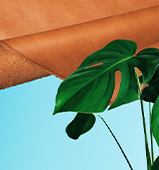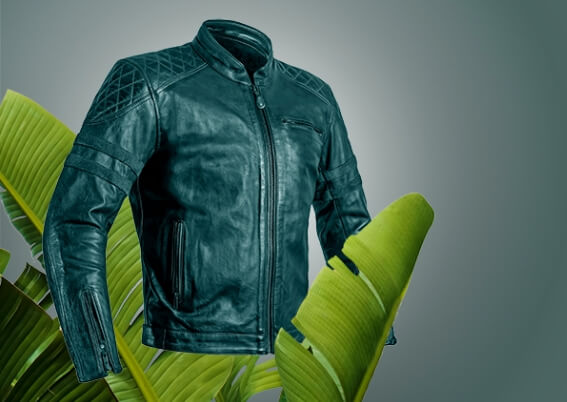Knowing in order to choose
The thread that guides this column is knowledge. Knowledge of a product gives freedom of choice. Here we collect researches, interviews, articles and experiences to clarify the identity, origin, values and performance of genuine leather compared to alternative materials.


Do you want to learn about the behind the scenes of a tannery?
We believe in true transparency. In fact, we are the first to "open the doors" of our tanneries and share the knowledge we have acquired over the years. Because if tanning processes have no secrets, then one can also better appreciate all the art behind it.
Learn moreWe believe in true transparency. In fact, we are the first to "open the doors" of our tanneries and share the knowledge we have acquired over the years. Because if tanning processes have no secrets, then one can also better appreciate all the art behind it.
Learn more

How well can you say you really know leather?
We are convinced that the more you know about leather, the more you can recognize true quality leather. Starting with the technical terminology that defines the type of leather according to well-defined parameters.
Learn moreWe are convinced that the more you know about leather, the more you can recognize true quality leather. Starting with the technical terminology that defines the type of leather according to well-defined parameters.
Learn more

Is it better to have a ‘fast fashion’ garment or a timeless one in genuine leather?
We’ll tell you the advantages of real leather: it is naturally breathable, soft, durable and the more you use it, the more beautiful it becomes. If necessary, more and more brands also offer a repair service to further extend the life cycle of their products.
Learn moreWe’ll tell you the advantages of real leather: it is naturally breathable, soft, durable and the more you use it, the more beautiful it becomes. If necessary, more and more brands also offer a repair service to further extend the life cycle of their products.
Learn more

Is it possible to know the origin of each leather production?
DANI pays great attention to the traceability and transparency of its supply chain, making it possible to trace hides from the farm to the finished product. This is a guarantee of respect for the 5 Freedoms of Animal Welfare.
DANI pays great attention to the traceability and transparency of its supply chain, making it possible to trace hides from the farm to the finished product. This is a guarantee of respect for the 5 Freedoms of Animal Welfare.


Do you believe that animals are raised for leather manufacturing or do you know that leather manufacturing is upcycling?
We recover natural materials, by-products from the food industry, elevating them to become a raw material with great performance.
Learn moreWe recover natural materials, by-products from the food industry, elevating them to become a raw material with great performance.
Learn more

Claiming that “tanning pollutes” or knowing that its waste is transformed?
We recover over 98% * of our waste to be transformed into raw materials for other industrial sectors. * As stated in the DANI Sustainability Report
We recover over 98% * of our waste to be transformed into raw materials for other industrial sectors. * As stated in the DANI Sustainability Report


Do you think that the alternatives to leather are all sustainable or do you know their origin?
We read every day that “alternative” often means “derived from plastic materials” which are not comparable in terms of performance to leather and claim levels of sustainability that are certainly not proven.
Learn moreWe read every day that “alternative” often means “derived from plastic materials” which are not comparable in terms of performance to leather and claim levels of sustainability that are certainly not proven.
Learn more

Talking about deforestation or knowing where the leather actually comes from?
We source responsibly: over 95% of our leathers are of European origin and not coming from areas at risk. We believe the leather industry has an opportunity to intensify and support efforts to eliminate deforestation, and can use its influence to drive change and accelerate the protection of endangered habitats.
Learn moreWe source responsibly: over 95% of our leathers are of European origin and not coming from areas at risk. We believe the leather industry has an opportunity to intensify and support efforts to eliminate deforestation, and can use its influence to drive change and accelerate the protection of endangered habitats.
LEARN MORE

Calling materials “leather” even when they are not, or to acknowledging the value of this definition?
We know that it is strictly forbidden to use the word “leather” to identify materials not derived from animals. Nevertheless, we encounter deceptive messages such as “eco-leather”, “ecological leather”, “vegan leather” to identify materials of synthetic origin.
Learn moreWe know that it is strictly forbidden to use the word “leather” to identify materials not derived from animals. Nevertheless, we encounter deceptive messages such as “eco-leather”, “ecological leather”, “vegan leather” to identify materials of synthetic origin.
Learn more

How important is the processing of the by-product of the leather industry?
Very much. Collagen and animal gelatine is a natural protein in great demand in the cosmetics and pharmaceutical industries for applications such as tissue, bone and joint strengthening, skin rejuvenation, cellular repair and bone reconstruction. It is also used in skin care products, glue production and many other everyday products.
Very much. Collagen and animal gelatine is a natural protein in great demand in the cosmetics and pharmaceutical industries for applications such as tissue, bone and joint strengthening, skin rejuvenation, cellular repair and bone reconstruction. It is also used in skin care products, glue production and many other everyday products.


Do leather trimmings return to the earth as fertilizer or are they handled as waste?
No waste. Our residues (fats, trimmings, waste and shavings) are transformed into biostimulants and organic and organic-mineral fertilizers, which can best meet the needs of an increasingly specialized agriculture that is increasingly careful not to use chemical fertilizers.
No waste. Our residues (fats, trimmings, waste and shavings) are transformed into biostimulants and organic and organic-mineral fertilizers, which can best meet the needs of an increasingly specialized agriculture that is increasingly careful not to use chemical fertilizers.


